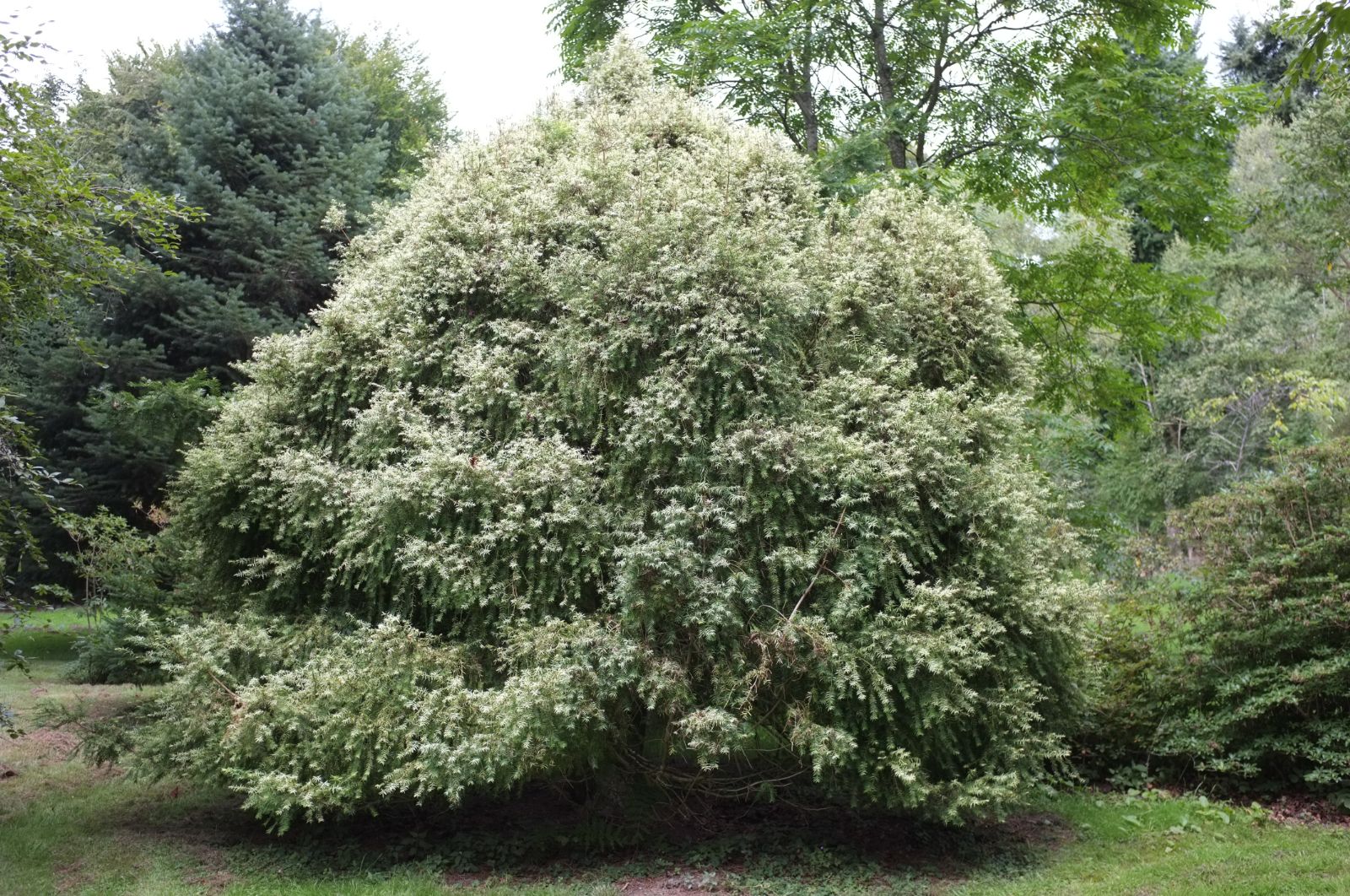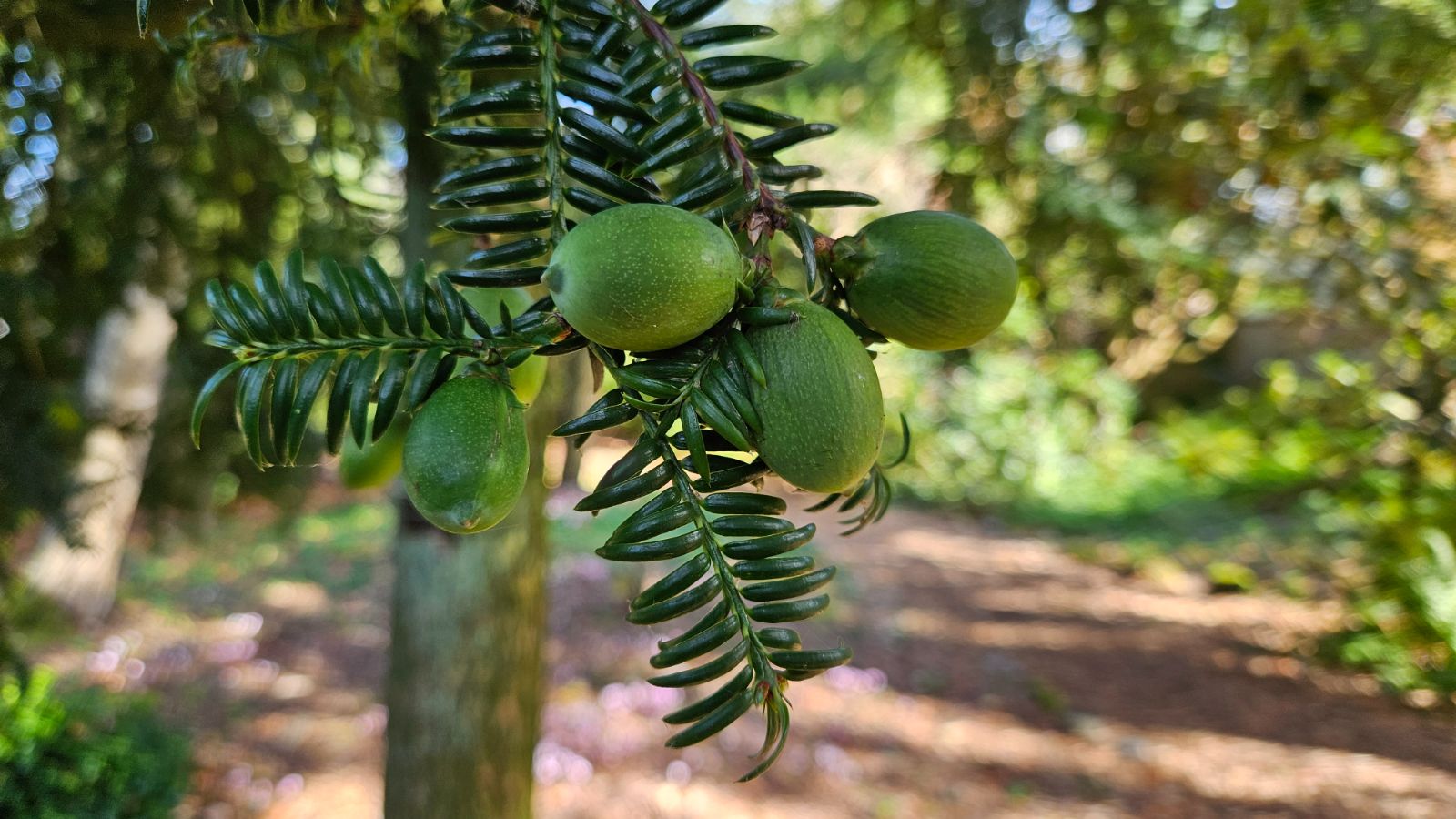Torreya nucifera
Credits
Article from Bean's Trees and Shrubs Hardy in the British Isles
Recommended citation
'Torreya nucifera' from the website Trees and Shrubs Online (treesandshrubsonline.
Genus
Synonyms
- Taxus nucifera L.
A tree in Japan occasionally 80 ft high, oftener a shrub or small tree 20 to 30 ft high; in cultivation, so far as I have seen, always of a shrubby character, and not more than 10 or 12 ft high. Young shoots green, becoming in succeeding years purplish and shining. Leaves linear, 3⁄4 to 11⁄4 in. long, 1⁄8 to 3⁄16 in. wide, tapered at the upper part to a slender, stiff point, very dark glossy green above, and with two glaucous stomatic strips beneath. The leaves (somewhat convex on the upper surface, stiff and hard in texture) are borne in two spreading ranks, which form a broad V-shaped channel. Fruits green, elliptical, 1 to 11⁄8 in. long, 3⁄4 in. wide. They are occasionally borne in abundance at Kew.
Native of Japan, where, like the Californian species, it is nowhere common, preferring moist heavily shaded positions. According to the younger Aiton it was cultivated by a Captain Cornwall as early as 1764, and was listed by Weston in 1775 as a plant then in commerce. T. nucifera is much less common in Britain than T. californica, from which it differs in its shorter more glossy leaves, directed downwards, and its orange-red shoots. There is an example at Wakehurst Place in Sussex, 38 × 21⁄2 ft (1970) and another at Scorrier in Cornwall, 40 × 23⁄4 ft (1973).
The kernels of the nuts have an agreeable, slightly resinous flavour, and yield an oil once used in Japan for cooking.
Allied to the above is T. grandis Fort. of China, of which a few plants are in cultivation. Its leaves are shorter and thinner in texture than those of T. nucifera, and when crushed do not emit the pungent aromatic odour of that species; the bark of the young shoots, at first green, is later greyish. This torreya was discovered by Fortune in Chekiang in 1855 and introduced by him; it is a native of eastern and central China. The only sizeable examples known are: Kew, 25 × 2 ft (1970) and Borde Hill, Sussex, 29 × 11⁄4 ft (1968).
From the Supplement (Vol. V)
specimens: National Pinetum, Bedgebury, Kent, pl. 1925, 30 × 13⁄4 ft (1979); Wakehurst Place, Sussex, 38 × 21⁄2 ft (1970); Victoria Park, Bath, The Dell, 42 × 21⁄2 ft (1984).
T. grandis – It remains true that the plants at Kew and Borde Hill are the only sizeable specimens known in this country.


